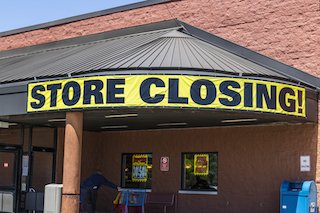A new national survey of small business owners released Sept. 22 finds that small businesses are at risk of closing their doors due to the unexpected loss of the business owner.
The New York Life Small Business Insurance Gap survey found that nearly two in every five businesses (38%) don’t have enough protection to keep their companies in business after the entrepreneur’s unexpected death. The survey identified that the average insurance gap among these small businesses is $1.4 million, representing the self-reported shortfall between a small business’s financial needs and the money the business would have available from an owner’s life insurance policy in the event of the owner’s death.
“These numbers are eye-opening. Small businesses are the foundation of the U.S. economy, and now we know that almost 40% of these businesses are potentially at risk,” said Steve Strauss, USA TODAY senior small business columnist, best-selling author and an independent consultant to New York Life. “The [survey] is the first of its kind – taking a deep dive into the self-reported financial needs of small businesses resulting in news that should convince owners to take action today to better protect what they have worked so hard to build.”
This is news agents can also use to help convince small business clients and prospects to fix this oversight by obtaining proper coverage.
The survey examined the financial planning attitudes and behaviors of 1,001 established small business owners, who have been in business for a minimum of five years and have between 10 and 49 employees.
It focused on how much life insurance coverage small businesses had in place and how much more income they would need to protect the business in the event of the death of the owner, resulting in a self-reported gap. Among those businesses with a gap, there are minor variations by size and years in business.

“Our agents work with small businesses across the country and hear from owners that the continuation of their business is a priority for many reasons, including continuing to provide security for their family and their employees, and leaving a legacy for themselves. Yet we regularly find, and this survey confirms, that one of the more important financial concerns that is being neglected is ensuring that the business survives the loss of the owner, which is an important consideration for small businesses, especially during September, Life Insurance Awareness Month,” said Brian Madgett, Vice President, New York Life.
Small business is an (extended) family affair
The majority (72%) of small business owners report that they will leave the business to family, including 53% who report their spouse would keep the business if they pass away suddenly.
“I would say to owners who have a gap that they need to protect the future of the business and the financial livelihood of their immediate family,” Strauss said. “What I also know is that the small business owner’s family extends to include their employees, which owners often consider a second family. When asked about continuation of the business, owners reported that employees keeping their jobs was most important, even more than business growth and providing income for their immediate family. That speaks volumes about how much owners care about their employees.”
“The Gap puts almost eight million* small business employees at risk of losing their jobs. The lack of life insurance protection is at odds with the loyalty and commitment these owners have for their employees,” Madgett said. “My challenge to business owners is to adequately protect their business today to ensure their business continues in the future and survives the unexpected.”
Small business owner = 3 full-time employees
Small business owners were asked about the value they provide to the business in terms of hours, responsibilities and direct impact on sales and revenue to assist in determining that the unexpected loss of the business owner is equivalent to three trained, full-time employees.**
“No one will be surprised to learn that the owner is critical to the business, but the knowledge that if they were to pass away unexpectedly it would require the work of three full time employees to fill the gap in lost production should be the encouragement owners need to put a prudent plan in place,” added Strauss.
The business owner’s impact on the business was also reported in other ways:
• The owners self-report that revenue would decline by 34% if they were to die
• 77% of owners expect to work until the age of 65 or longer, including 35% stating they will never stop being involved in their business
• More than 40% of owners work longer than the typical full-time work week
• Financial success falls to the owner, with 79% having revenue-generating responsibility.
“I have seen it happen too often: an unexpected event can shift the course of a business from success to failure very quickly. News of this gap should be a warning for small business owners to ensure today that their business remains open and thrives for years to come,” Strauss said.
Survey Methodology
New York Life, the nation’s largest mutual insurer, commissioned an online survey of 1,001 small business owners. To qualify for the survey, respondents had to have at least a 26% ownership share in the business, for a business that had been operational for at least five years and had between 10 and 49 employees. The survey fielded in June 2017. In a similarly sized random sample survey, the margin of error would be plus or minus 3.16 percentage points at the 95% confidence level. The survey was managed by independent research firm, Greenwald & Associates.
Gap Calculation: Owners were asked about their 2016 revenue, the minimum revenue required to keep the business operational without hardship, the expected loss of revenue upon the owner’s death, and the number of years it would take the business to recover the lost revenue following the owner’s death. When the difference between the minimum revenue needed to remain operational and the revenue expected following the owner’s death is not covered by current life insurance, the business is said to have an uncovered “gap.”
About New York Life: New York Life Insurance Company, a Fortune 100 company founded in 1845, is the largest mutual life insurance company in the United States*** and one of the largest life insurers in the world. New York Life has the highest possible financial strength ratings currently awarded to any life insurer from all four of the major credit rating agencies: A.M. Best (A++), Fitch (AAA), Moody’s Investors Service (Aaa), Standard & Poor’s (AA+).**** Headquartered in New York City, New York Life’s family of companies offers life insurance, retirement income, investments and long-term care insurance. Please visit New York Life’s website at www.newyorklife.comfor more information.
*There are approximately one million small businesses with 10-49 employees, employing 20 million workers; 38% of this total number of workers is 7.6 million. Source: U.S. Small Business Administration, Office of Advocacy, based on data provided by the U.S. Census Bureau, Statistics of U.S. Businesses.
**The estimate of three employees is based on a calculation of how much revenue the company would be able to generate per employee without the owner’s contribution. Three to four employees would be necessary to replace the lost revenue experienced if the owner died.
***Based on revenue as reported by “Fortune 500 ranked within Industries, Insurance: Life, Health (Mutual),” Fortune magazine, 6/12/17.
****Individual independent rating agency commentary as of 8/1/17.













